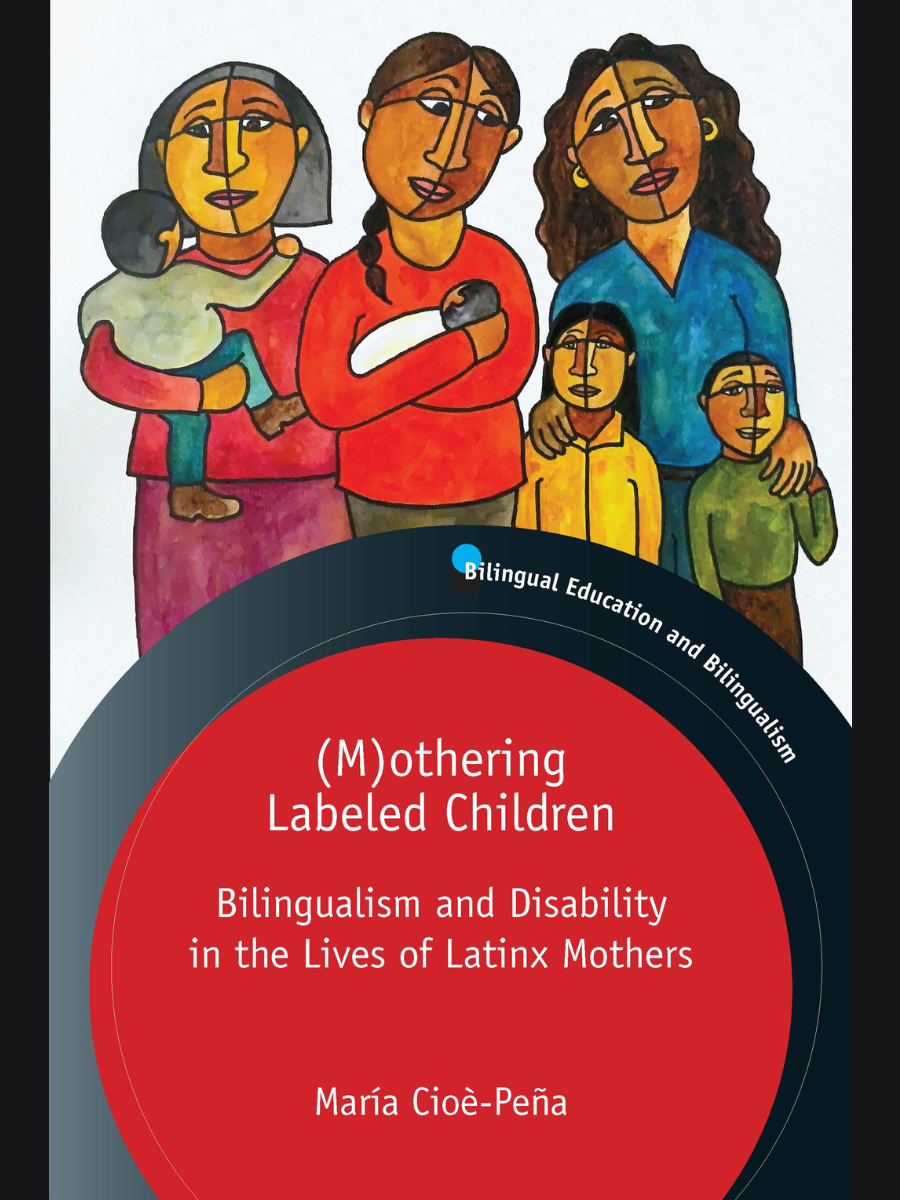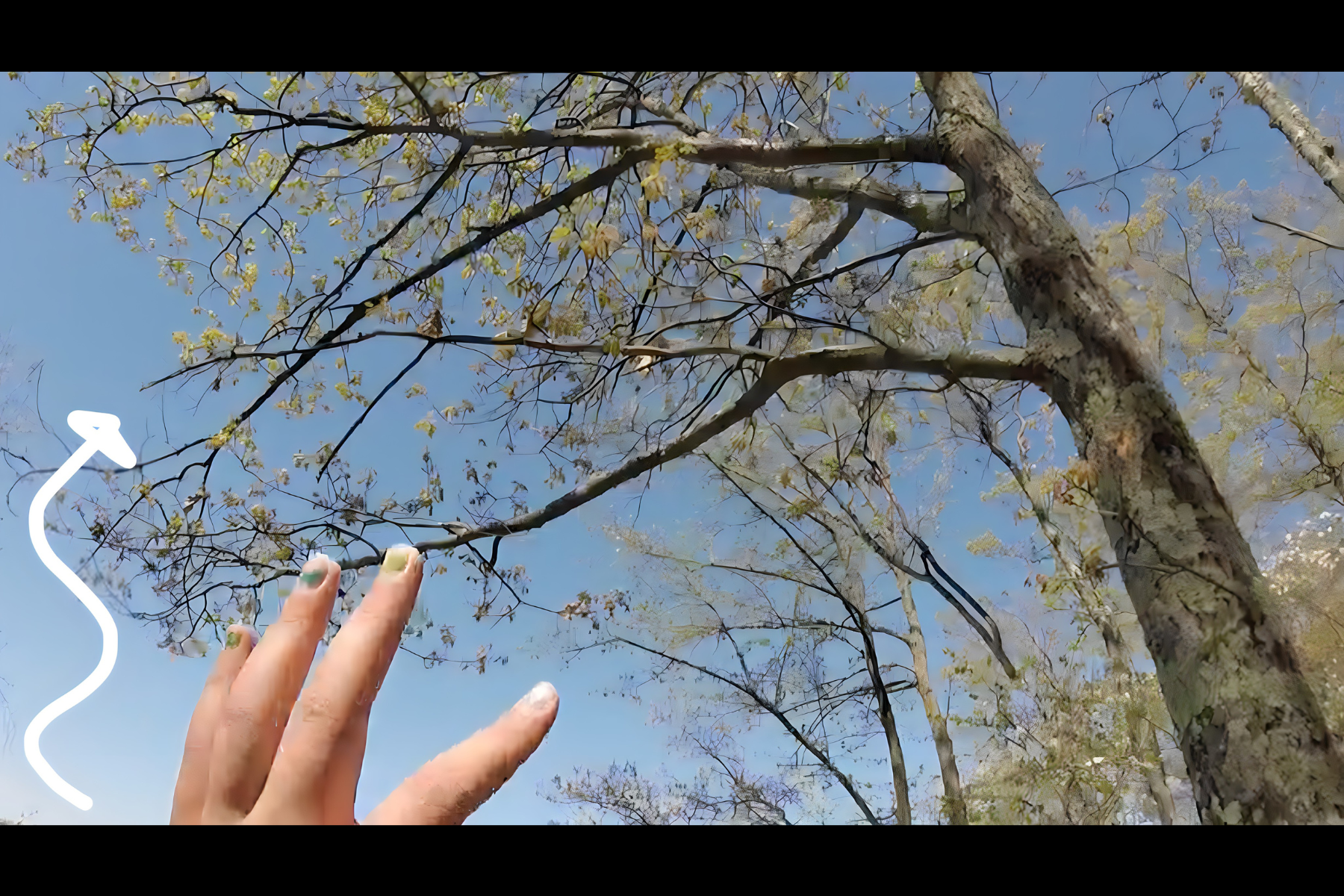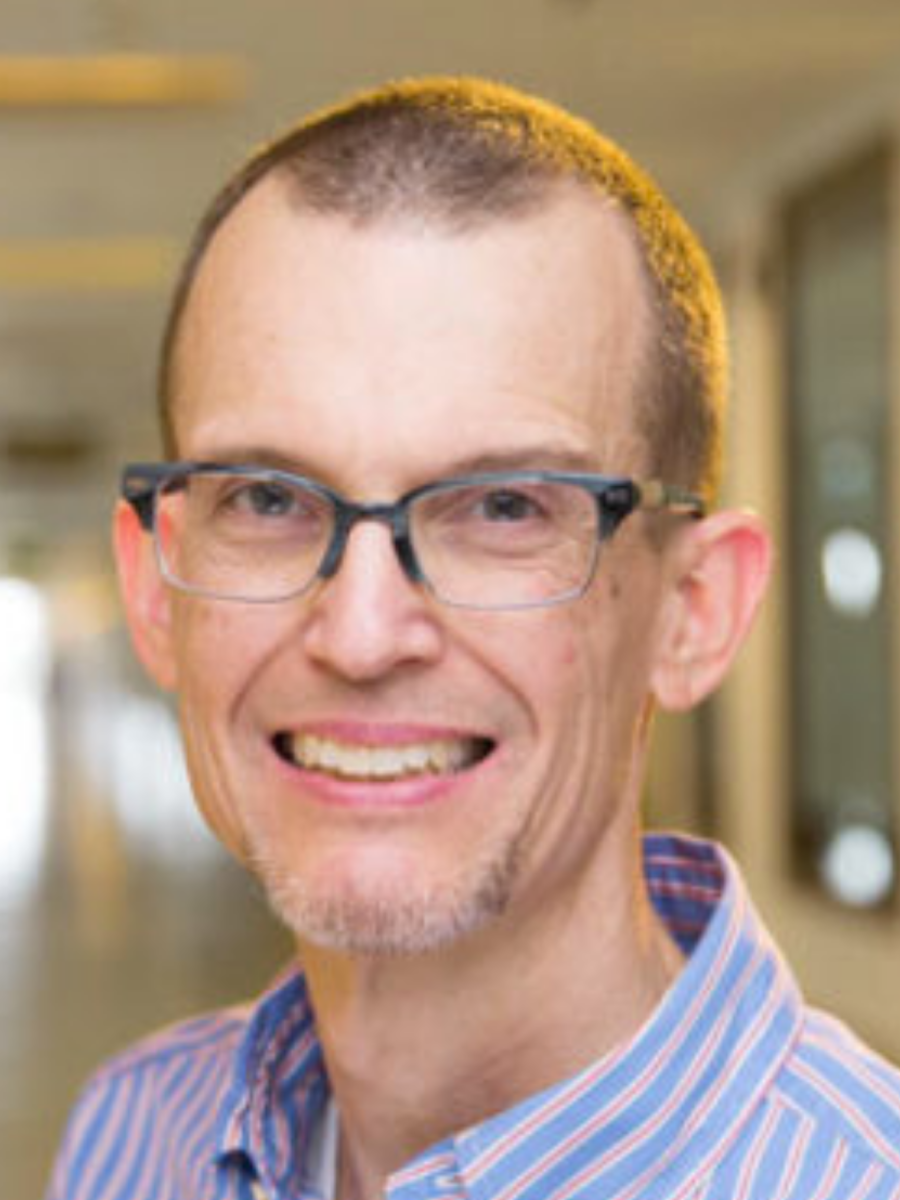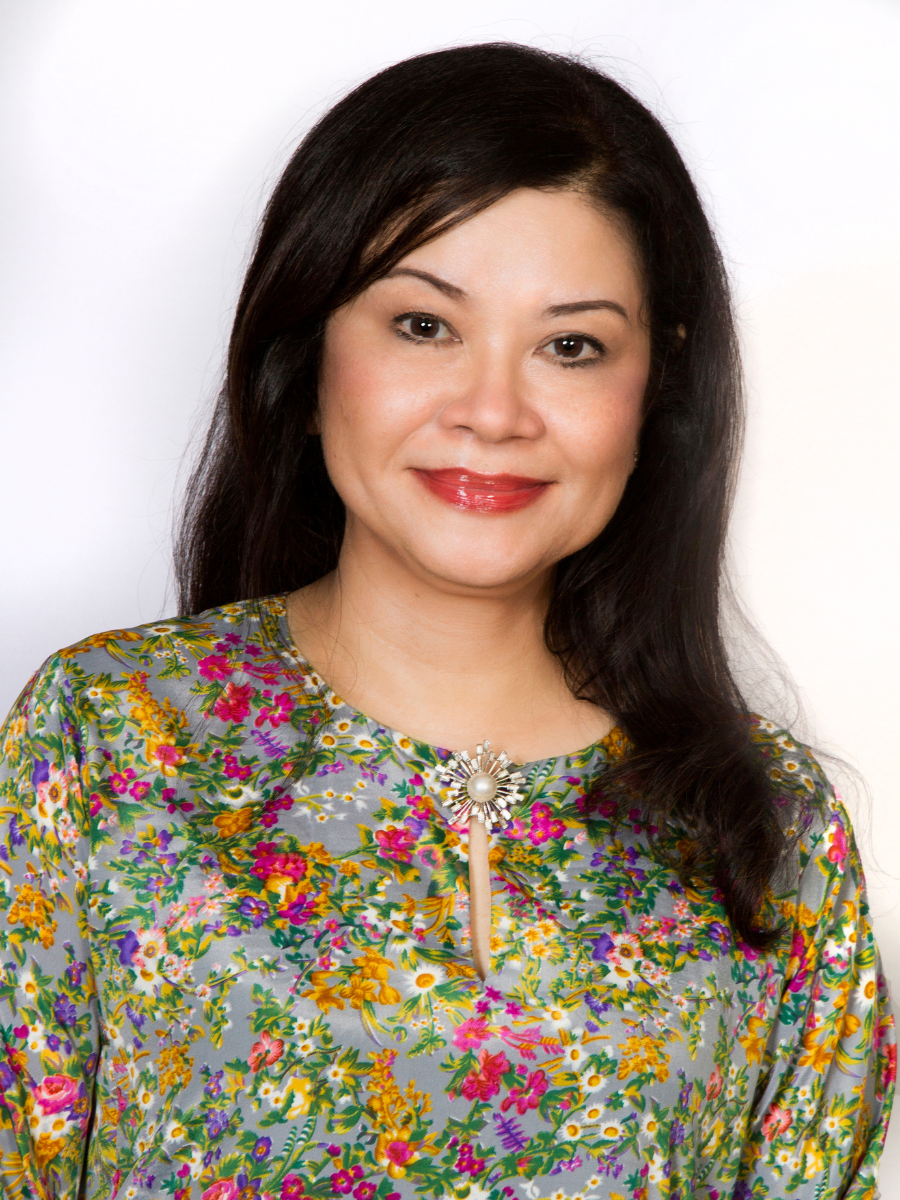Feature Articles
June 2023 AAALetter
Table of Contents
- Mothering at the Intersection: Embracing Complexity and Connectivity in Language Education and Beyond|María Cioè-Peña
- Co-operative Learning with Language and Land|Mel Engman & Mary Hermes
- Announcing the Grabe-Stoller Graduate Student Travel Award: Giving It Forward|Dudley Reynolds
- AILA and AAAL: Going Forward Together|Azirah Hashim
Mothering at the Intersection: Embracing Complexity and Connectivity in Language Education and Beyond
María Cioè-Peña, University of Pennsylvania
AAAL 2023 First Book Award Recipient

Cover of (M)othering Labeled Children, featuring a drawing of three women: one holding a small child, one holding an infant, and the third holding onto two standing children
“Revolution ain’t cute or tidy and neither is mothering.” (Gumbs et al., 2016, p. 2)
In the weeks since receiving AAAL’s 2023 First Book award, I have been reflecting on the moments in time that make a work like (M)othering Labeled Children: Bilingualism and Disability in the Lives of Latinx Mothers (MLC) important and valuable and on the experiences that shaped me and made this work possible. I have come to see that this book and I are products of a time and place rooted in justice, multiplicity, and wholeness, and this book reflects a deep desire to return there. In MLC, I take an opportunity to present the communities that raised me—working-class immigrant women—along the way resisting and correcting dominant narratives about mothers and education. I did this to push back against narratives that position women like my mother, aunt, and sister as devoid of language, expertise, culture, and capacity. Situated in a historically immigrant neighborhood of New York City, MLC shares with readers the experiences of ten Latinx mothers as they care for their children who have been classified as English language learners (ELLs) and students with disabilities (SWDs) by educational systems. Featuring rich ethnographic descriptions alongside participant Testimonios, MLC showcases the complexity of mothering dual-identified learners within and across institutional and interpersonal contexts that position racialized immigrant women as underserving foreigners and/or exploitable sources of labor. One might find it curious that a book centering mothers, rather than language learners, would resonate so deeply across the fields of bilingual, special, and language education. However, these programs themselves are also deeply reflective of a time and place also deeply rooted in multiplicity, wholeness, and justice. The quest for bilingual education arose from a race-radical vision focused on social justice—mothers were and continue to be central to the growth of these programs but also the original movement. Mothers are not only caretakers but also agents of change.
In Essential Labor, Angela Garbes (2022) writes about the ways in which mothering, and any care work centering/dependent on racialized women, is viewed as a gendered and depreciable act. Yet she points out that mothering—across gender expressions and identities—is essential to the sustainability of society, as was evident during the COVID-19 pandemic-related lockdowns and school closures, and critical for social change. Within Revolutionary Mothering, Gumbs, Martens, Williams, Williams, and Ross (2016) center mothering as the distinctly political act of “investing in others’ existence” beyond biological and colonial definitions of who counts as family (p. xv). In Lose Your Mother, Saidiya Hartman (2008) talks about the legacy of slavery on African Americans, centering the loss of “mother” tongues and cultures. Across these texts, the importance of mothers, as individuals and a community, is at the forefront. These texts also highlight how motherhood is not a universal experience and is one that is also deeply affected by one’s positionality. According to Every Mother Counts, (1) more than 80% of all maternal deaths in the U.S. can be prevented, (2) maternal mortality rates are twice as high for women living in counties with high poverty rates, and (3) Black women are three times more likely to die of pregnancy-related complications than White women. Beyond this, White, middle-class women are often able to reduce the added load/burden that comes with being a mother by outsourcing labor related to the household and caretaking, often adopting the role of momager, while Black and Brown women are usually employed as domestic workers (e.g., housekeeper, nanny; Garbes, 2022).
MLC, alongside these texts from varying fields and epistemological stances, centers the importance of seeing mothers as relational, connective beings—bringing together people, places, histories, and languages. They also highlight the need for intersectional perspectives to help us understand and improve our collective lived experience. For far too long, educational research, including language education research, has centered mothers—and parents and families, overall—as agents in service of the school, positioning the school as the site of knowledge, expertise, and progress. However, adopting an intersectional lens that looks at mothering in relation to language ideology/policies, immigration policies, public health, institutional racism, sexism, etc. is critical in finding ways forward. It is through understanding the multiplicity of individuals that we will begin to recognize how the categories we created in the hopes of instilling order are reductionist and condense people into the mere sum of their labels, rather than the product of the environment and opportunities afforded to them. As such, we continue to find ways to remediate individual learners, families, and communities, failing to learn that connectivity is about wholeness and justice.
Ultimately, MLC is an important step towards showcasing connectivity within applied linguistics. Through the lived experiences shared within it, we can understand how racialized mothers’ struggle for healthcare impacts their capacity to fit schools’ definitions of engaged parents, how immigration policies influence relationships with school agents, how homework policies create family conflict, etc. . . . and how all these factors influence their capacity to support their children’s linguistic development. I hope that anytime someone reads this book, they understand how a study about education can happen outside of schools and yet reveal so much about schooling. . . . I hope they see that in order to see mothers as whole, we have to see them—beyond the roles and expectations and towards the paths to liberation.
References
Cioè-Peña, M. (2021). (M)othering labeled children: Bilingualism and disability in the lives of Latinx mothers (Vol. 131). Multilingual Matters.
Every Mother Counts (EMC). (2023, April 27). Giving birth in America. Every Mother Counts (EMC) | Improving Maternal Health. Retrieved on May 10, 2023 from https://everymothercounts.org/giving-birth-in-america/.
Garbes, A. (2022). Essential labor: Mothering as social change. HarperCollins.
Gumbs, A. P. (Ed.). (2016). Revolutionary mothering: Love on the front lines. Pm Press.
Hartman, S. (2008). Lose your mother: A journey along the Atlantic slave route. Macmillan.
Co-operative Learning with Language and Land

Reading the land: a young Ojibwe language user coordinates her speech,
“nashke owe aniibiishan” ("look at those leaves"), with a
hand gesture that embodies the wind-blown leaves with her
fluttering fingers
Mel M. Engman, Queen’s University Belfast, and Mary Hermes, University of Minnesota
AAAL 2023 Research Article Award Recipients
What can we learn about language through research with Indigenous ways of knowing and being?
In spring of 2016, first-speaker Ojibwe Elders and bilingual Ojibwe youth met at Waadookodaading immersion school to take part in an Ojibwe language reclamation project (the “Forest Walks” project was supported by a grant from the National Science Foundation, NSF #1664510). Bringing these two generations together was possible because of ongoing community efforts to maintain and reclaim some of the human and more-than-human relationships destroyed by violent settler colonial structures of invasion, theft, and erasure. After offering asemaa and reviewing research protocols, these multi-generational participants donned point-of-view cameras and microphones and then headed out into the nearby woods in pairs and small groups. We didn’t ask them to go anywhere specific or to discuss anything in particular. The aim was to collect some exploratory data that would help develop a sense of the role of language in “reading the land” (Bang & Marin, 2015), a practice that we see as central to the project of language reclamation.
Reclamation and relationality
Language reclamation is a framework that Leonard (2019) describes as a “decolonial intervention.” Drawing on Indigenous knowledges, reclamation takes language as a starting point for de-settling colonial boundaries across many domains because the nature of language is relational rather than an object. Strengthening human relations with language can strengthen human relations with other beings, land, and timescales (Deloria, 1979). This relational perspective anchored the project’s approach to language as well as to the natural environment in which the research took place. Forests are living ecologies in which relationality is existential for all beings (Kawagley, 1995; Kimmerer, 2013; Simpson, 2014). Indigenous framing of the research begins with an acknowledgement that human life is part of a larger relational web, and it rejects the culture/nature boundary—a pervasive concept in colonial thought in which human culture is seen as something separate from the natural world. Rather, humans are part of nature, regardless of whether we are in forests, bogs, suburbs, or cities.
Giving land a turn
A relational view of language and place helps us to understand how learning can be done with land rather than on land. Subsequently, one additional important step in our study was that when we transcribed the videos, we gave land a turn at talk. Goodwin’s (2013, 2018) theory of co-operative action describes how participants in an interaction use and transform parts of their previous contributions (e.g., grammar, prosody, gestures, and materials) and the contributions of other participants to create something new. Participants need not have a shared goal to decompose, borrow, and transform one another’s actions. Though Goodwin focuses on human actors, an Indigenous perspective allowed us to return animacy and agency to land in our research. In transcribing the recordings of our Ojibwe participants on forest walks, we noted that non-human actors consistently contributed to the interaction, and so we included these co-operative contributions in the multimodal transcripts with representative screenshots.
Learning “with” land and language
Hours of data generated from 15 different walks showed that learning, knowing, and relating were not happening on land, but with land. We saw numerous instances of youth-led learning that was grounded in interaction with plants, animals, rocks, story, memory, and senses. In many instances, communication was visual, embodied, and felt rather than spoken aloud—and it is important to note that lack of verbal production did not correlate with lack of communication or lack of knowledge.
Our findings illustrated the pedagogical significance of reuniting Indigenous language with land and the centrality of place-based relationships to learning. The role of the Elder in interactions was negotiated and shared with other beings. Rather than a hierarchical “expert-novice” structuring of Elder-youth interactions, our data consistently showed flattened power relations in which wondering was done together, and knowledge was distributed across Elders, youth, and land.
As an example, a query regarding the name for needles found on the forest floor did not elicit a simple, one-word answer from the Elder. Instead, the youth were encouraged to examine the needles with their fingers, with their memories, and in context (i.e., where the needles were found, what they were and were not attached to, and the time of year). In this way, knowledge became something that was co-constructed and emergent from relationships as opposed to an object transmitted from one knower to another.
Future directions
This idea of land as an interlocutor and as a dynamic participant in interaction helped us to stretch and expand our analysis in subsequent projects to include stories (Hermes et al., 2021), embodiment (Hermes et al., 2023), and mobility (Engman et al., 2022). It also inspired projects that continue to treat language as a relational phenomenon, including language reclamation work in urban Irish kitchens (Engman et al., forthcoming) and exploring the possibilities for Indigenous world-making through video game production and play (Hermes, 2022).
These are all small steps to regain an understanding of what it is to live in relation to the land, deeply listening and communicating with those beings in that particular place. This is what language reclamation means in a deep sense: remembering what it meant during the time we all spoke to all the beings of the place we are rooted in. Since so much of language work is only concerned with human-human interactions, we are only beginning to follow the leads of the land in unraveling settler-colonial damage.
To learn more about Ojibwe language revitalization efforts, visit Grassroots Indigenous Multimedia, a nonprofit organization founded by Mary Hermes in 2000.
References
Bang, M., & Marin, A. (2015). Nature-culture constructs in science learning: Human/non-human agency and intentionality. Journal of Research in Science Teaching, 52, 530–544.
Deloria, Jr., V. (1979). The metaphysics of modern existence. San Francisco, CA: Harper & Row.
Engman, M. M., Hermes, M., & Schick, A. (2022). Co-conspiring with land: What decolonizing with Indigenous land and language has to teach us. In S. Makoni, A., Kaiper, and L. Mokwena (Eds.), The Routledge Handbook of Language and the Global South/s (pp. 95–109). Routledge.
Engman, M. M., McGurk, Ó., & MacKenzie, A. (forthcoming). Teanga sa chistin: Speaking Irish, baking bread, reclaiming the language. Teanga.
Goodwin, C. (2013). The co-operative, transformative organization of human action and knowledge. Journal of Pragmatics, 46, 8–34.
Goodwin, C. (2018). Co-operative action. New York: Cambridge University Press.
Hermes, M. R. (2022). Reclaim! A game that unites Ojibwe language, land and beings. Solve – MIT. https://solve.mit.edu/challenges/indigenous-communities-2022/solutions/62079.
Hermes, M. Meixi, Engman, M. M., & McKenzie, J. (2021). Everyday stories in a forest: Multimodal meaning-making with Ojibwe Elders, young people, language, and place. WINHEC: International Journal of Indigenous Education Scholarship, 2021(1), 267–301. https://journals.uvic.ca/index.php/winhec.
Hermes, M., Engman, M. M., Meixi, MacKenzie, J. (2023). Relationality and Ojibwemowin in forest walks: Learning from multimodal interaction about land and language. Cognition and Instruction, 4(1), 1–31. https://doi.org/10.1080/07370008.2022.2059482.
Kawagley, A. O. (1993). A Yupiaq world view: Implications for cultural, educational, and technological adaptation in a contemporary world. (Unpublished doctoral dissertation). University of British Columbia, Vancouver, Canada.
Kimmerer, R. W. (2013). Braiding sweetgrass: Indigenous wisdom, scientific knowledge and the teachings of plants. Minneapolis, MN: Milkweed Editions.
Leonard, W. (2019, September 19). Indigenous languages through a reclamation lens [Blog post]. Accessed 22 November 2020 at https://www.anthropology-news.org/articles/indigenous-languages-through-a-reclamation-lens/.
Simpson, L. B. (2014). Land as pedagogy: Nishnaabe intelligence and rebellious transformation.Decolonization: Indigeneity, 3, 1–25.
Announcing the Grabe-Stoller Graduate Student Travel Award: Giving It Forward
Dudley Reynolds, Carnegie Mellon University Qatar
Past Chair, AAAL Fund for the Future of Applied Linguistics (FFAL)
Over their long careers of leadership and service in the field of applied linguistics, William (Bill) Grabe and Fredricka Stoller have inspired and mentored many graduate students and young professionals. I was fortunate to meet them early in my career, and I remember thinking at the time how much their graduate students at Northern Arizona University must appreciate them.

This commitment to developing the field carried over into their professional service to AAAL and TESOL International Association. Grabe served as AAAL President in 2001–2002 and was instrumental in establishing the Fund for the Future of Applied Linguistics (FFAL), which by 2023 was able to provide seven travel awards for graduate students to attend and present at the annual conference. So it was no surprise last summer when they reached out to me as then-Chair of the FFAL Trustees to say that they would like to give $50,000 to endow an additional travel grant for graduate students to present at AAAL’s annual conference.
Beginning with our 2024 conference, the Grabe-Stoller Award will provide a $1000 grant for an awardee studying in North America or $1,500 for an awardee studying in and submitting a conference proposal from any other country. The grant amount is comparable to other travel awards supported by FFAL, and, if a decision is made to increase the amount of those awards, the Grabe-Stoller Award will be similarly increased. Recipients must attend the full conference in order to maximize their professional development and networking opportunities, and they will receive a complementary conference registration.
Initially, one awardee will be selected each year. Interest accrued by the endowment beyond what is necessary to fund the grant will be reinvested in the fund. When its value reaches $90,000, the number of awards will be increased to two per year.
The selection process for the award will be determined by the AAAL Executive Committee and announced later. Grabe and Stoller are both known for their empirical research on second language reading, content-based instruction, and disciplinary writing practices. Therefore, in the selection process, preference will be given to students presenting an empirical study, preferably classroom-based research, that advances L2 teaching and/or L2 learning.
When they were honored for their gift at the 2023 conference in Portland, Grabe said that they hoped their gift would inspire others whose careers have been recognized and supported by AAAL to step up and consider making a similar significant contribution, either directly to the Fund for the Future of Applied Linguistics or as a separate endowed fund. Anyone who is interested in doing so is welcome to reach out to the current FFAL Trustee Chair, Linda Harklau.
AILA and AAAL: Going Forward Together

Azirah Hashim, Universiti Malaya, Malaysia
President, International Association of Applied Linguistics (AILA)
It is a great honour to have been invited to contribute this article to this issue of the AAALetter. In terms of membership, AAAL is the biggest affiliate of the International Association of Applied Linguistics, popularly known as AILA, from its acronym in French. In this article, I am pleased to give an update of recent developments within AILA and look forward to closer collaboration as we confront the challenges arising from the COVID-19 pandemic.
At the recent AAAL conference in Portland, I was greatly impressed by the programme, organising committee, and the number of attendees as well as AAAL’s new initiatives, especially on mentoring and early-career researchers. Congratulations to the AAAL team for an immensely inspiring and successful conference!
AILA was founded in 1964 and developed as a mainly European and American entity in its early years, subsequently becoming a worldwide body with affiliates in East and Southeast Asia, Latin America, and the Middle East, bringing new voices and perspectives. It now has about 35 affiliates and is still growing.
AILA marks its 60th anniversary in 2024, and this milestone is being marked by congresses in Europe (Lyon) this year, in Southeast Asia (Kuala Lumpur) next year, and at a venue still to be decided in 2025. These events/occasions will be held in innovative and hybrid formats, reflecting current challenges and changing times. Experiences and learnings from these congresses will help develop new formats for future inclusive and state-of-the-art meetings.
AILA’s long relationship with the United Nations Educational, Scientific, and Cultural Organization (UNESCO) helps to heighten our members’ awareness of social issues and of the importance of interdisciplinary collaboration. Our regional networks (AILA Europe, AILA East Asia, and AILA ASEAN) and AILA Ibero-America have strengthened collaboration within and among regions, and we hope to further increase inter-regional initiatives and networking through joint engagements, research, and events. Meetings between AILA leadership and individual affiliates in the course of this year are also proving useful in identifying issues and opportunities affecting our affiliates and how AILA can better support them.
AILA endorses affiliates’ policies, such as the AAAL ethics guidelines, enabling the mutual sharing of best practice. By scouting out policies and guidelines such as these and sharing them with other affiliates, we encourage the development of policies and guidelines suiting a wide range of different contexts.
As we celebrate our Diamond Jubilee, we recognize the importance of institutional memory, and the Association’s founders are being recalled in a project compiling archival material from AILA’s early days. It is appropriate that we remember the eminent applied linguists who worked hard to develop the Association in its early days and who built the foundation that has enabled AILA to continue to grow over the decades.
One of my aims as AILA President—which I am confident I can realise with the valued support of AAAL and others—is to promote inter-regional collaboration among affiliates. It is important to build networks, applying the opportunities of the technologically interconnected world hastened by the pandemic. I hope to encourage more joint engagement and exchanges, diversifying the ways that knowledge flows in our discipline and enriching dialogue amongst us.
The COVID-19 pandemic and its many challenges have affected everyone. AILA is not a vehicle in itself for solving these problems directly. However, AILA can make an important contribution to overcoming current issues through its focus on interdisciplinary and transdisciplinary research related to language and communication and collaboration among affiliates. In this context, the AILA-AAAL relationship has never been more relevant than it is today.
